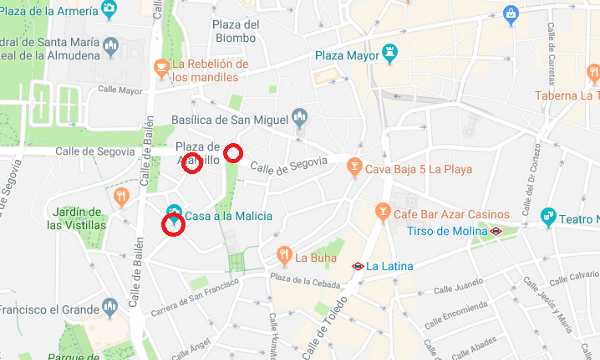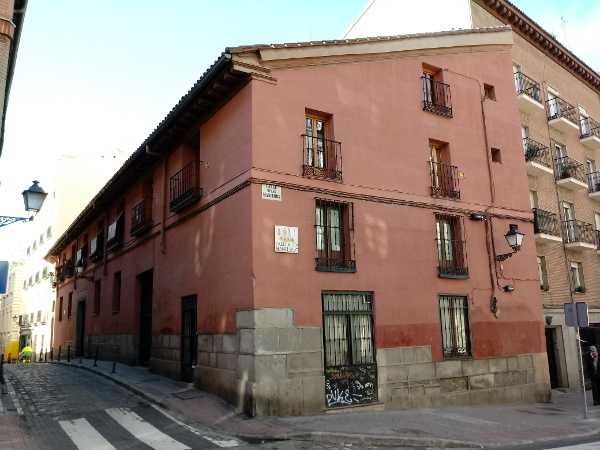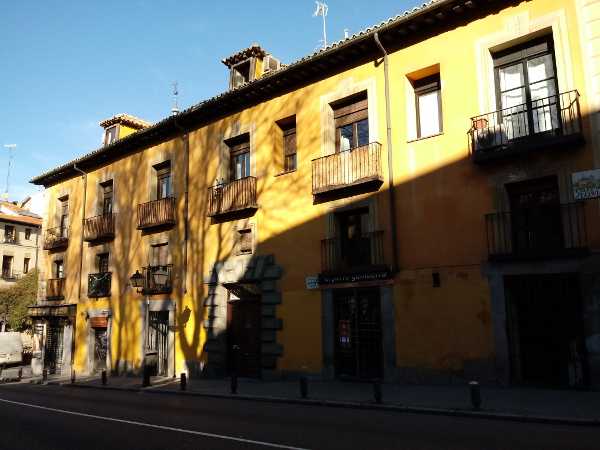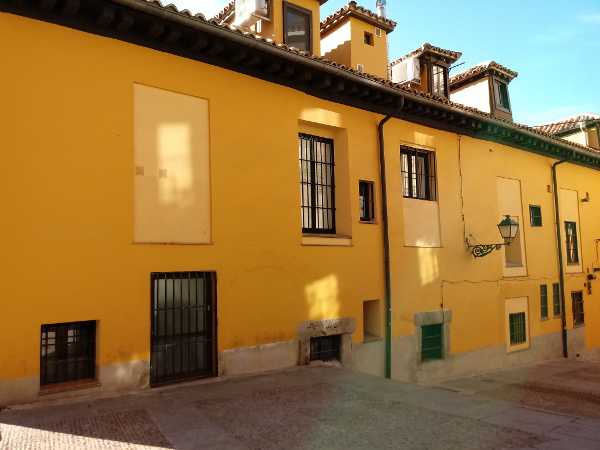
Malice houses, an example of the spanish slyness in the 16 Century
As you may know we Leaf Madrid love little fairytales and curiosities, especially those that go unnoticed. In this post we are going to talk about the malice houses. Trap houses one could say. Have you heard about the Spanish “picaresca”?
Let’s ge into La Latina district, the oldest part of Madrid. The medieval layout here is everywhere. Narrow streets, curves out of nowhere. We are talking about the area around Plaza de Carros, Plaza de la Morería, Jardín de las Vistillas, el Mercado de la Cebada y Plaza de la Paja. Truth is that this is not the most visited area of Madrid, although it has something special. Timeless charm, perennial tranquility, the sense of a small village…not exactly what you expect in an European capital.
Wandering around the area, we can find some…strange houses. The “malice” houses! In order to get to know what’s behind these eccentric houses, we need to get back to the days of Philip the Second.

Red circles mark the position of some of these houses: Calle de la Redondilla, Plaza del Alamillo, y Calle de Segovia.
During the first half of the 16th century, the capital of Spain was always changing. If the king is in this place, there you have a capital. The court was moving off along with the monarch and all the equipment. That was not very practical… obvious, Mister Sherlock. So in 1561, Philip the Second decided to move the capital to Madrid.
As you can guess, all the palace staff, army generals, and various snoopers came at once to the new capital. The problem is that there was not enough space for everybody! To solve this issue the king Philip proclaimed the “Regalía de Aposento”. This royal usufruct said that those houses having more than one floor, had to host all those newcomers.

Do you think the madrileños like the idea of hosting unknown foreign people? This law had a little sidepoint. The houses that are “hard to divide” from the outside don’t have to apply this law. We have a saying in Spanish: hecha la ley, hecha la trampa. Make the law, trap is set.
People started to hide floors inside the houses, changing the shape of the roof, moving windows, hiding groundfloors, intermediate floors, attics…giving birth to Malice houses. Let’s see some examples. An image is worth more than a thousand words.

The “fair” side

The “cunning” side
And this is how we avoid to share half of our houses with the Royalty! Isn’t it ingenious? This example of Spanish cunning is still alive in the city in some other areas as in Huertas district, also called the Writers district. Our most famous writers lived in that area. Walk along the district and Discover them! If you want to know more about this curiosities about Madrid, don’t hesitate to join our free tour Madrid! We will be really glad to show you all these curiosities!
Here you can find the link:
